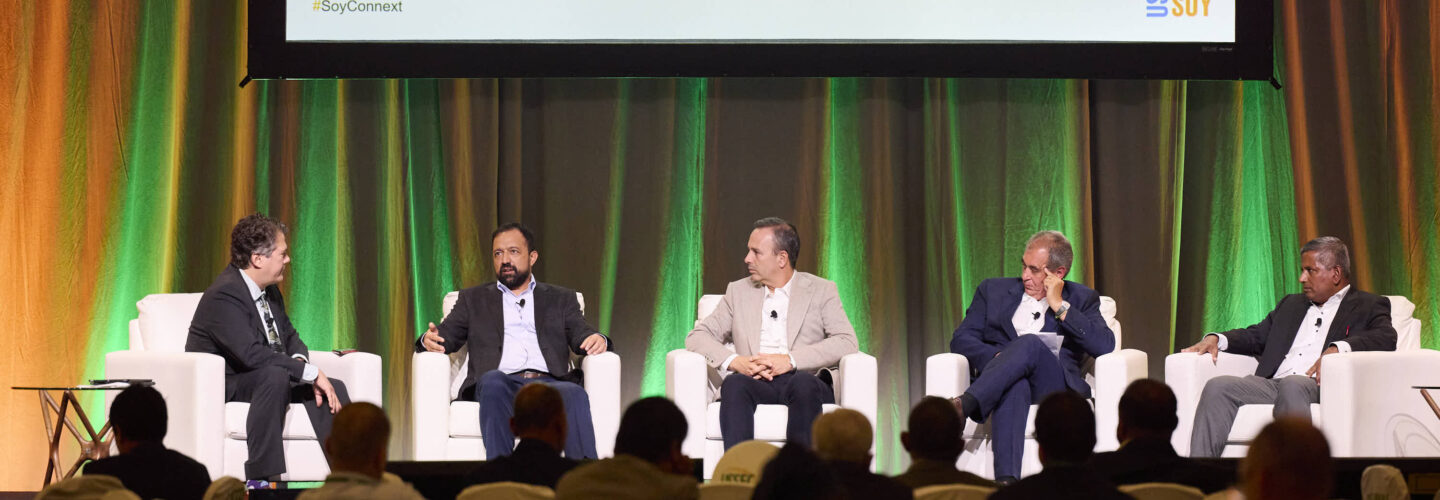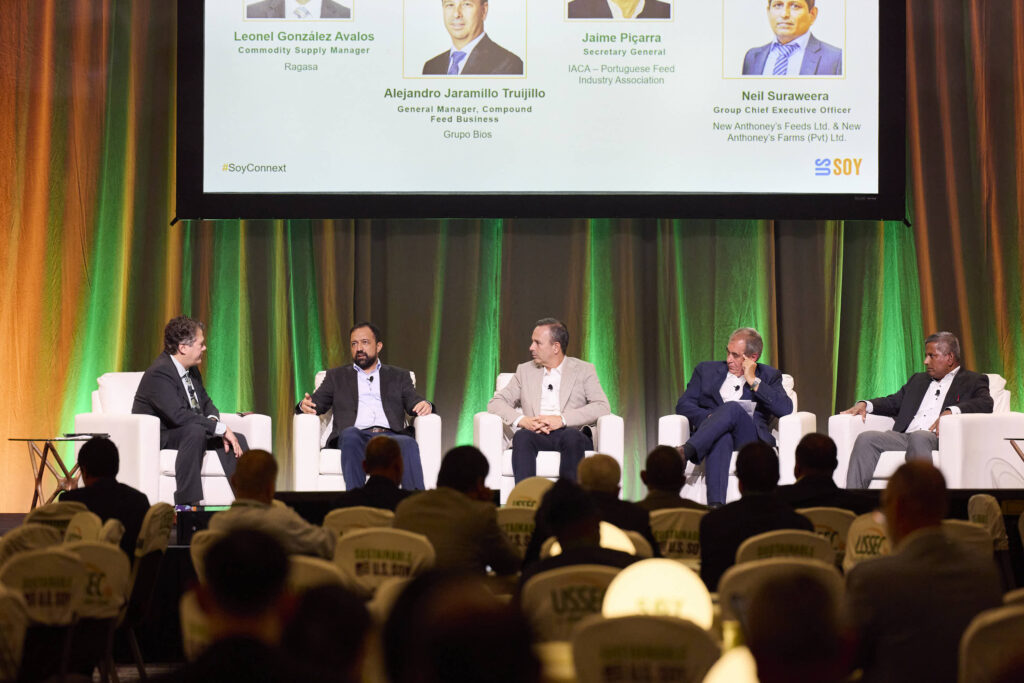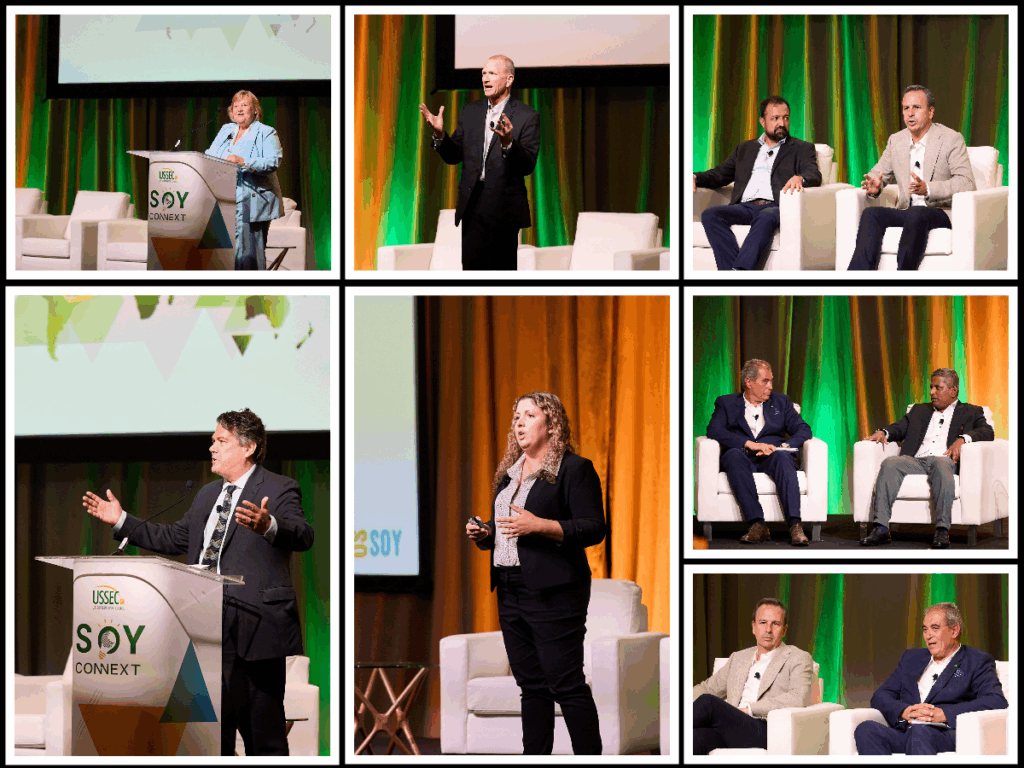
Unlocking Your Profit Potential with U.S. Soy at Soy Connext 2024
In today’s competitive landscape, animal and aquaculture producers are constantly searching for ways to optimize their operations, reduce costs, and maximize profitability. At the heart of these efforts lies a crucial ingredient: U.S. Soy. The 2024 Soy Connext conference has brought together experts, producers, and thought leaders to San Francisco, California. The objective is to explore more broadly how U.S. Soy is nourishing animal and aqua species while helping unlock significant profit potential for business owners across the protein value chain.
Speakers exploring this topic included: Ms. April Hemmes, U.S. Soy farmer from Iowa and a Director at United Soybean Board, Mr. Greg Martinelli, Ag Sales Professional and Coach; Dr. Flavia Damasceno, Feed Formulation and R&D Specialist at Wittaya Aqua and Dr. Thomas D’Alfonso, Director Animal and Aquaculture at U.S. Soybean Export Council (USSEC).
The Power of U.S. Soy
Starting the session, Ms. Hemmes shared her perspectives on what makes U.S. Soy a powerful commodity. She highlighted how for generations, sustainability has been at the root of everything U.S. Soy farmers do and in fact, their commitment to sustainability only continues to grow. With focus on regenerative techniques that nurture soil fertility and biodiversity, Ms. Hemmes shared, “This is how a commodity becomes ‘Sustainable U.S. Soy’. It’s how U.S. farmers contribute to the long-term viability and resilience of soybean farms from the ground up.”

Beyond having the lowest carbon footprint,[1] U.S. Soy has long been recognized for its superior nutrient bundle, quality and consistency.[2] These qualities are not just buzzwords; they translate into real, measurable value for producers. For more than a decade, U.S. Soy has been monitored and work is underway to further quantify quality. But the data available is already revealing substantial benefits extend across the entire protein value chain. This includes lower feed costs, improved animal performance, and ultimately, higher profitability.
Reiterating USSEC CEO’s observations, Dr. D’Alfonso noted in his opening remarks, “The value unlocked by using U.S. Soy in feed formulations can mean millions of dollars added to the bottom line for medium-to-large animal producers.”
Maximizing Buyer and Seller Value
A key theme of the day was the importance of creating win-win situations in the marketplace. In the session “Listen to Maximize Buyer and Seller Value,” Mr. Martinelli, a seasoned ag sales coach, emphasized the need for sellers to listen more intently to their buyers. By understanding and anticipating customer needs, sellers can improve relationships and create more value for both parties. This approach is particularly relevant in the context of U.S. Soy, where the consistency and nutrient-rich profile of the product can meet and exceed customer expectations, leading to sustained business relationships that are beneficial to both.
Martinelli stressed that, “Both buyers and sellers win when the seller knows they are solving a real customer need. It’s about unlocking value through understanding and collaboration.” This perspective is especially valuable for those in the animal and aquaculture sectors, where the quality and consistency of feed ingredients like U.S. Soy directly impact the success of their operations.

The Gold Standard in Animal and Aqua Feeds
During the session titled “The Value of Adding U.S. Soy in Animal and Aqua Feeds,” Dr. Damasceno, from Wittaya Aqua, provided compelling data underscoring why
U.S. Soy is often referred to as the “gold standard.” The session highlighted comparative analyses of soy from different origins, demonstrating that U.S. Soy consistently outperforms its counterparts in terms of digestibility, nutrient composition, and economic value[3].
One of the standout points from Dr. Damasceno’s presentation was the superior performance of U.S. Soy in aquafeeds. Comparative studies revealed that U.S. Soy not only supports better growth rates and feed efficiency in species like tilapia and whiteleg shrimp but also contributes to higher fillet yields and overall profitability. For example, in a bio-economic analysis of Nile tilapia, U.S. Soy was shown to deliver a profit margin of 13.4%, significantly higher than soy from Argentina or Brazil, which lagged behind with margins of 9.5% and 4.9%, respectively.[4]
Dr. Damasceno noted, ” The economic value of an ingredient in aquafeeds is influenced not just by market price but by its nutritional quality and performance outcomes. U.S. Soy stands out as a cost-effective and sustainable choice, offering superior profitability in aquaculture operations compared to soy of other origins.”
A Commitment to Sustainability
U.S. Soy’s commitment to sustainability was another critical aspect highlighted throughout the day. Sustainable farming practices not only ensure the long-term viability of the land but also enhance the overall business sustainability for U.S. Soy customers. According to a recent report shared during the opening remarks, 64% of consumers5 feel happier about their purchases when they know they are buying sustainable products. This consumer trend is not only good for the planet but also for business, as it attracts top talent, reduces costs, and boosts profits.
The U.S. Soy industry has responded to these demands with the Sustainable Soy Assurance Protocol (SSAP), which has become a key differentiator in the market. More than 80% of U.S. Soy exports now carry an SSAP certificate, reflecting the industry’s leadership in sustainability and its commitment to meeting customer needs.
Looking Ahead
As the sessions at Soy Connext 2024 all alluded, it is clear U.S. Soy is playing a pivotal role in helping animal and aquaculture producers unlock their profit potential. The insights and data shared by the presenters provide a compelling case for why U.S. Soy should be the go-to choice for feed formulations. By choosing U.S. Soy, producers can not only invest in a product with superior nutritional value and consistency but also do so for the long-term sustainability of their businesses.
Reach out to your local USSEC representative to learn more about how you can start unlocking value with U.S. Soy.
This story was partially funded by U.S. Soy farmers, their checkoff and the soy value chain.
[1]Block Consultants Agrifootprint Database
[2] 2021 – Aquaculture Nutrition Research – Comparative Analysis of Soy from Different Origins by Wittaya Aqua
[3] 2021 – Aquaculture Nutrition Research – Comparative Analysis of Soy from Different Origins by Wittaya Aqua
[4] 4 “Nguyen et al., 2021 Comparative Analysis of Soy from Different Origins – study by Wittaya Aqua”.
[5] Capgemini Report